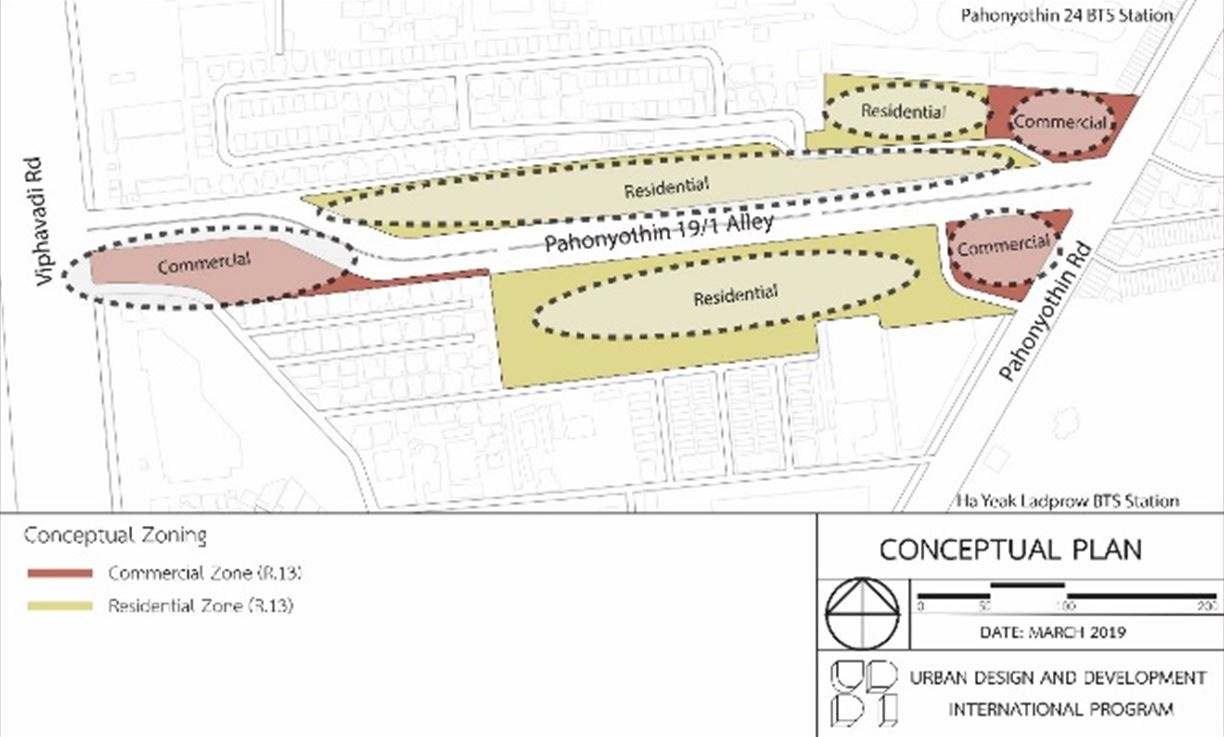Planned Unit Development (PUD) in Urban Design Project
Main Article Content
Abstract
Since 1960s Bangkok has been under the practices of post-war urban planning, in addition to a series of initial development of comprehensive plans, through four versions of adopted comprehensive plans which were used as urban development controlling tool, while lacking regulations for urban guidance. Planned Unit Development (PUD) is a regulation allowing comprehensive planning and design on a specific large urban area with flexibility for greater livability. This research aims to explore the applicability of PUD in the urban development process of Bangkok. Two conceptual design scenarios for applying PUD were generated providing project feasibility analysis and PUD design guidelines. The research is conducted as an experimental study focusing on the tasks of three variables: scenario generation, feasibility analysis, and urban design and development. The design experimentation result has been stated that it potentially applies PUD on the study site (Pahonyothin 19/1, Bangkok). However, it will require great financial aid and a period of time. With PUD, Bangkok urbanization can reach the stage of urban design that contributes variable benefits such as site planning and design, density modification, providing infrastructures, and circulation improvement. In addition, PUD provides greater ranges of benefits such as carbon reduction, urban heat island mitigation, promoting Transit Oriented Development (TOD), and positioning on SDG 11: Sustainable Cities and Communities. The research output is providing guidelines towards a sustainable 21st century city for Bangkok.
Downloads
Article Details

This work is licensed under a Creative Commons Attribution-NonCommercial-NoDerivatives 4.0 International License.
All material is licensed under the terms of the Creative Commons Attribution 4.0 International (CC-BY-NC-ND 4.0) License, unless otherwise stated. As such, authors are free to share, copy, and redistribute the material in any medium or format. The authors must give appropriate credit, provide a link to the license, and indicate if changes were made. The authors may do so in any reasonable manner, but not in any way that suggests the licensor endorses you or your use. The authors may not use the material for commercial purposes. If the authors remix, transform, or build upon the material, they may not distribute the modified material, unless permission is obtained from JARS. Final, accepted versions of the paper may be posted on third party repositories, provided appropriate acknowledgement to the original source is clearly noted.
References
American Planning Association. (2006). Planning and Urban Design Standards. New Jersey, USA: John Wiley & Sons.
Askew, M. (2002). Bangkok: Place, Practice and Representation. New York, USA: Taylor and Francis Group.
Bangkok City Planning Department. (2018). Planned Unit Development Handbook. Unpublished manuscript.
Bernick, M. S., & Cervero, R. B. (1996). Transit Villages in the 21st Century. New York, NY: McGraw-Hill.
Gartland, L. (2008). Heat Island, Understanding and Mitigating Heat in Urban Areas. New York, NY: Earthscan.
Sternlieb, G., Burchell, R. W., Hughes, J. W., & Listokin, D. (1974). Planned Unit Development Legislation: A Summary of Necessary Considerations. Retrieved October 15, 2018 from https://openscholarship.wustl.edu/cgi/viewcontent.cgi?article=1741&context=law_urbanlaw/
The Association of Siamese Architects. (2017). Building Regulations Handbook for Design. Bangkok, Thailand: Plus Press.
United Nations. (2019). Sustainable Development Goals 11: Make Cities and Human Settlements Inclusive, Safe, Resilient and Sustainable. Retrieved from https://sdgs.un.org/goals/goal11.
Williams, J. (2012). Zero Carbon Homes: A Road Map. New York, USA: Earthscan.


